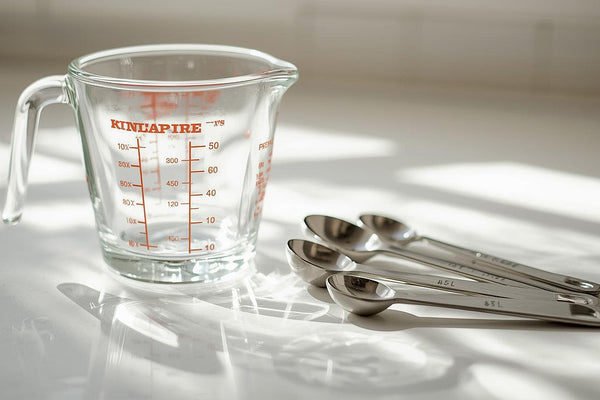
🥣 How Many Ounces Are in a Cup? A Simple Guide for Home Cooks and Bakers
Have you ever paused mid-recipe, wondering how many ounces are in a cup? Whether you're whipping up a batch of cupcakes or simmering a savory soup, understanding measurement conversions is key to culinary success. With both metric and imperial systems in play, it’s easy to get confused—but don’t worry, we’re here to make it simple.
📏 Metric vs. Imperial: What’s the Difference?
Let’s start with the basics. The world uses two main systems of measurement:
- Metric System: Common outside the U.S., based on milliliters and grams.
- Imperial System: Used primarily in the U.S., based on fluid ounces and pounds.
Each system has its own way of measuring cups and ounces, and knowing which one your recipe uses can make all the difference.
🧪 Metric System Conversions
In the metric system:
- 1 cup = 250 milliliters = 8.45 fluid ounces
This applies to both dry and liquid ingredients. So if your recipe calls for 2 cups of flour, you’ll need:
- 500 milliliters or
- 16.91 fluid ounces
Simple, consistent, and easy to remember.
🇺🇸 Imperial System Conversions
In the U.S., things get a bit more nuanced:
Liquids:
- 1 cup = 8 fluid ounces
- 2 cups = 16 fluid ounces
Dry Ingredients:
- 1 cup ≈ 4.41 ounces by weight
- 2 cups ≈ 8.82 ounces
But here’s the catch: dry ingredients vary in weight depending on density, humidity, and how tightly packed they are. A cup of flour doesn’t weigh the same as a cup of sugar. That’s why bakers swear by kitchen scales—they offer precision that measuring cups can’t.
⚖️ Why Weight Matters for Dry Ingredients
When converting dry ingredients, volume isn’t always reliable. For example:
- 1 cup of flour ≈ 4.41 ounces
- 1 cup of granulated sugar ≈ 7 ounces
To get consistent results, especially in baking, use a digital scale and measure by weight. It’s the secret weapon of every great baker.
💧 Liquid Measurements: Easy as Pie
Thankfully, liquids are more predictable:
- 1 cup = 8 fluid ounces
- 2 cups = 16 fluid ounces
This applies to water, milk, oil, and other pourable ingredients. No need to worry about density—just measure and go.
🧮 Quick Tip: Use Online Calculators
If you’re short on time or dealing with complex conversions, online calculators can be a lifesaver. They’re especially handy when switching between metric and imperial systems. Still, having a basic understanding of conversions helps you double-check for accuracy.
🧠 Make It Stick
Learning how to convert cups to ounces might feel intimidating at first, but with a little practice, it becomes second nature. The key is understanding the logic behind each system. Once you do, you’ll be able to tackle any recipe with confidence.
✅ Final Thoughts
Whether you're baking birthday cupcakes or prepping a weeknight dinner, knowing how to convert cups to ounces is a must-have skill. Understanding both metric and imperial systems ensures your measurements are accurate—and your results delicious.
So the next time a recipe throws you a curveball, you’ll be ready to measure like a pro.
Happy cooking!
Visit Hannah Rose Vintage Boutique for Adorable Little Girls Clothing & Flower Girl Dresses
📐 Measurement & Conversion Focus
• “how many ounces in a cup of flour”
• “cup to ounce conversion for baking”
• “dry vs liquid cup measurements”
• “how to measure ingredients in ounces”
• “kitchen conversion chart for cups and ounces”
• “accurate baking measurements in ounces”
🍰 Baking & Cooking Context
• “how many ounces in 1 cup of sugar for baking”
• “convert cups to ounces for cake recipes”
• “measuring liquids in ounces for cooking”
• “cup to ounce conversion for soup ingredients”
• “how many fluid ounces in a cup of milk
• “holiday baking measurement tips”
• “back-to-school cooking conversions”
• “fall recipes with cup to ounce conversions”









